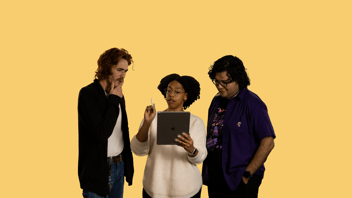
2020. The US's 59th quadrennial presidential election year was marked by massive unemployment, global protests against racial inequality, and a pandemic that pervaded almost every aspect of human life, including the role that diversity and inclusion plays in both governmental and private organizations. That's why the two phrases (inclusion and diversity) are becoming more common as efforts are directed towards forming inclusive environments within the US government. Now is the time to short list D&I initiatives for 2021 and beyond, and make sure you’re prepared for what comes next.
Although the number of senior job titles with inclusion and diversity increased by over 113% between 2015 and 2019, recent research by LinkedIn showed that these jobs decreased considerably immediately after the COVID-19 pandemic lockdowns worldwide as companies and government agencies rushed to reduce costs. In other words, D&I wasn’t seen as integral to organizational success.
The same data indicates a slight surge in job growth in the D&I space after the Black Lives Matter protests globally between June and August 2020 (after George Floyd's death at the hands of police). But there is a growing demand that has yet to be met in this space. This is mainly because many organizations still view inclusion as something that is supposed to be community or Adhoc driven. Completely separate from their organizational strategy, which is wrong.
Here’s why. Every individual in a government agency or business brings various thoughts, ideas, perspectives, and beliefs that help other employees have varied views on different business opportunities and challenges. As such, organizations need to appreciate the advantages of such differences and learn to value and respect every individual to create a better company culture. That’s what diversity is all about.
On the other hand, inclusion entails a company's efforts to make everyone feel equally treated and welcomed—like they belong. An inclusive culture makes employees feel valued and respected for who they are, making them more dedicated and motivated to work. And that is where federal government diversity and inclusion training comes in handy; particularly now when Black Lives Matter movements are emerging, the COVID-19 pandemic is recking havoc globally, and the recent US elections pitting republicans against the democrats will be a hot button topic for the foreseeable future.
Inclusion, diversity, and equity training is crucial now more than ever!
1. Keep politics from changing your workplace culture
A survey by SHRM shows that over 30% of the working population in the United States claim that their places of work aren't inclusive of divergent political views. Uncomfortable employees are usually less engaged, productive, and flexible. And with the recently concluded election still controversial, political perspectives are rapidly becoming more and more polarized. As a leader, you cannot afford to sit back and relax; The heavily politicized discussions may be unfolding, minimizing performance and spreading discomfort throughout the organization.
Please don't assume that politics is not finding its way into your zoom conferences, state or local agency briefings, or townhalls. Accept that emotions can rise when otherwise good-natured colleagues with divergent views disagree, leading to bizarre scenarios that are challenging to overcome. Make an effort to train them on how to discuss politics at the workplace with decorum through a dutiful discourse.
And the most effective way to achieve this is through diversity and inclusion training that’s not outdated or punitive in nature. Your workforce needs training that takes the current political/social/racial/religious climate into consideration. Training that doesn’t feel like training—but a way to learn and grow without feeling attacked or belittled. This type of training will create a rallying point from which the employees can relate to each other joyfully in a respectful and positive behavior and feel like they are part of an organization that is civil, safe, and worthy.
2. Recent social unrests
The second quarter of 2020 saw social unrest across the United States after several police killings of Black people. This made various organizations and government agencies, including the military, relook their inclusion and diversity strategies. This is what leads the military to develop a revamped 5-year plan for its officers. This shows how essential a modern, approachable, and scalable DEI learning program is right now.
3. COVID-19 is taking a heavy toll on gender equality at the workplace
The pandemic is a challenge that demands leaders to address various aspects that go beyond health and wellbeing. COVID-19 has highlighted the sophisticated interdependencies that foster economies and exposed faults and societal structures that promote gender, social, ethnic, and economic inequalities.
For instance, a recent report by McKinsey & Company showed that women are twice likely to lose their jobs during a crisis as compared to men. And allowing a person to go just because of their gender, particularly during a pandemic, is outrightly myopic.
Although pandemics usually lead to cash crunches, and it is very easy to throw diversity and inclusion to the dogs, it's particularly during a pandemic that an organization needs to invest in inclusion if they want to keep their competitive advantage through more innovation, higher team member morale, and more trusting leadership.
Lived experience and the value of differences
Yes, it is tempting for organizations to respond to financial pressure and uncertainty by ignoring DEI programs. But this won't serve your agency—be it federal, state, or local—in the long run. These programs are sustainable, strategic, and effective.
At Softway, we’re passionate about building bridges across difference. Instead of creating sameness—we help companies of all sizes celebrate what makes people unique.
Our products and services are created for organizations hunting for new, more modern ways of building diversity and inclusion efforts that have lasting change. We start where it matters most: self-awareness and behavior change.
To that end, we’ve created Hue™—a D&I learning platform that helps people learn more about the most pressing D&I topics in a way that builds greater self-awareness and inclusive practices.
Learn more about Hue™ and bring diversity and inclusion training into the 21st century for your organization.




